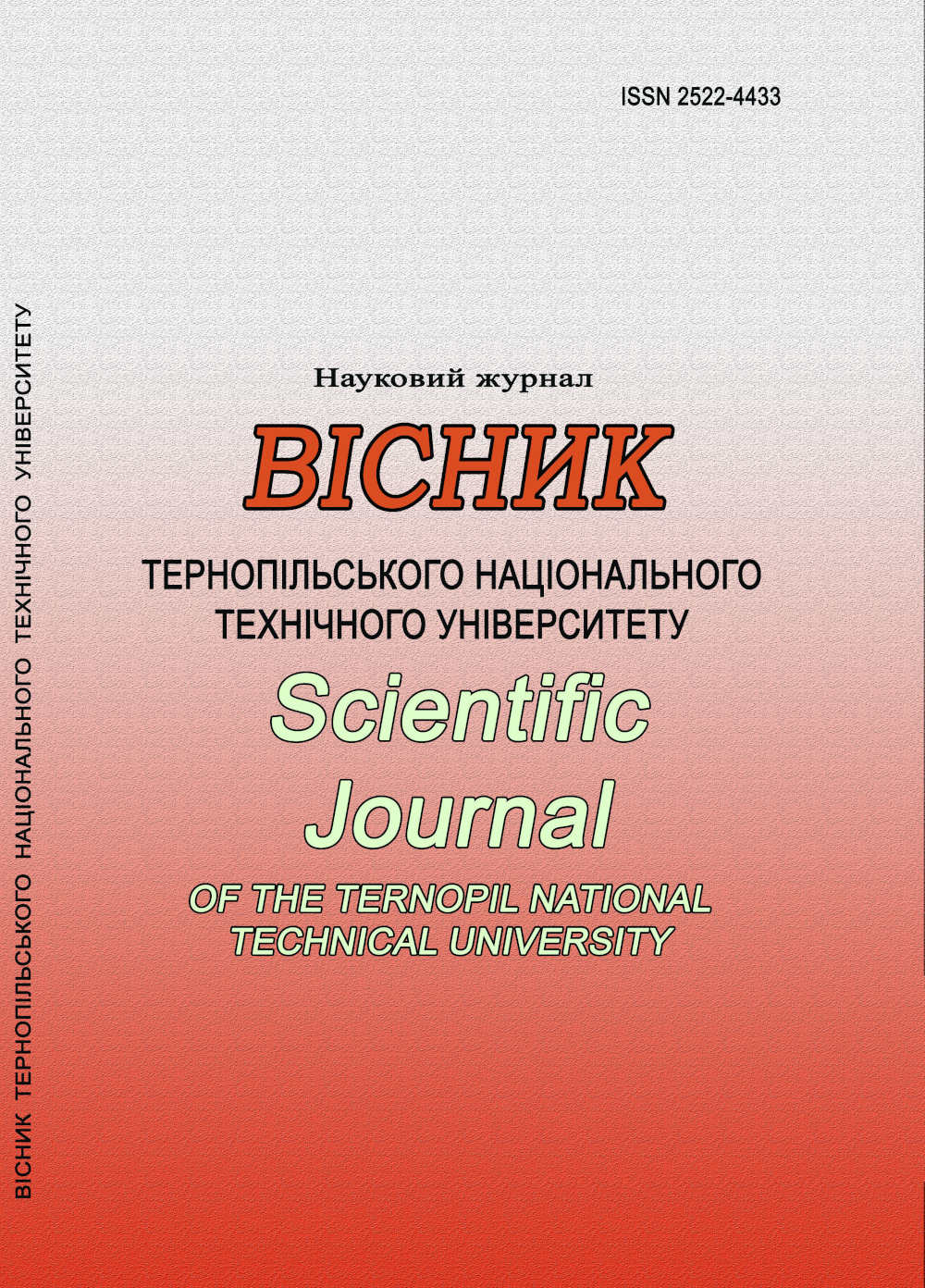Comparative analysis of the quality of plastic products formed by DLP and FDM 3D printing technologies
Main Article Content
Abstract
3D printing is the innovative technology widely used in all developed countries of the world and opens up significant potential for its application in various areas of human activity. The features of 3D objects creation using two the most commonly used additive manufacturing technologies – fused deposition modeling (FDM) and stereolithography version (SLA) - Digital Light Processing (DLP) are considered in this paper. By these technologies application the samples at various 3D printing modes using polylactide biopolymer (PLA) as consumable material are created and investigations of their geometry, structure, and mechanical properties (interlayer strength and elongation up to material rupture) are carried out. On the basis of the obtained results the influence of the specified print parameters, such as the extreme admissible values of 3D products layers thickness for FDM and DLP technologies, on the formed samples quality is investigated.
Article Details
Issue
Section

This work is licensed under a Creative Commons Attribution 4.0 International License.
References
1. Zarek, M., Layani, M., Cooperstein, I., Sachyani, E., Cohn, D., Magdassi, S. 3D printing of shape memory polymers for flexible electronic devices. Adv. Mater. 2016. 28. Р. 4449–4454. https://doi.org/10.1002/adma.201503132
2. Salmi M., Paloheimo K-S., Tuomi J., Wolff J., Mäkitie A. Accuracy of medical models made by additive manufacturing (rapid manufacturing). J Cranio Maxill Surg 2013. Volume 41, Issue 7. P. 603–609. https://doi.org/10.1016/j.jcms.2012.11.041
3. URL: https://www.orgprint.com/wiki/3d-pechat/sfery-primenenija-3D-pechati.
4. Sharon Ford Additive Manufacturing Technology: Potential Implications for U.S. Manufacturing Competitiveness. Journal of International Commerce and Economics. Published electronically September 2014. URL: http://www.usitc.gov/journals.
5. Synyuk O. (2017) Vyznachennia ratsionalnykh konstruktsiinykh parametriv prystroiv dlia pererobky polimeriv [Determination of rational structural parameters of devices for polymer recycling]. Scientific Journal of TNTU (Tern.), vol. 85, no. 1, pp. 53–60 [in Ukrainian].
6. Stuhlayk P., Dobrotvor I., Mytnyk M., Jastrubczak O. Deposition technology of protective coatings based on the assessments characteristics of the epoxy composites structures. Bulletin of TNTU, Ternopil: TNTU, 2014. Volume 75. No. 3. P. 114–121. (Mechanics and materials science).
7. Val'ter A. V. Texnologii additivnogo formoobrazovaniya. Tomsk: Izd-vo Tomskogo politexnicheskogo universiteta, 2013. 171 p.[In Russian].
8. D'yachenko V. A., Chelpanov I. B., Nikiforov S. O., Xozonxonova D. D. Materialy i processy additivnyx texnologij (bystroe prototipirovanie). Ulan-Ude: Izd-vo BNC SO RAN, 2015. 198 p.[In Russian].
9. Ligon, S. C., Liska, R., Stampfl, J., Gurr, M., Mülhaupt, R. Polymers for 3D Printing and Customized Additive Manufacturing. Chem. Rev. 2017. 117, pp. 10212–10290. https://doi.org/10.1021/acs.chemrev.7b00074
10. Turner BN, Strong R, Gold SA A review of melt extrusion additive manufacturing processes: I. Process design and modeling. Rapid Prototyping Journal. 2014. Vol. 20. Issue: 3, pp. 192–204. https://doi.org/10.1108/RPJ-01-2013-0012
11. URL: http://3dtoday.ru/wiki/3dprint_basics/.
12. Kazemi M., Rahimi A Supports effect on tensile strength of the stereolithography parts. RapidPrototyping. J 2015. 21, pp. 79–88 https://doi.org/10.1108/RPJ-12-2012-0118
13. Jacobs PF. Rapid prototyping & manufacturing: fundamentals of stereolithography. Dearborn. MI:Society of Manufacturing Engineers. New York: McGraw-Hill, 1992.
14. Zhang X., Jiang X, Sun C. Micro-stereolithography of polymeric and ceramic microstructures. Sensor Actuat A–Phys. 1999, pp. 77–149. https://doi.org/10.1016/S0924-4247(99)00189-2
15. Gibson I., Rosen DW, Stucker B. Additive manufacturing technologies. New York, NY: Springer. 2010. https://doi.org/10.1007/978-1-4419-1120-9
16. M. A. Zlenko, M. V. Nagajcev, V. M. Dovbysh. Additivnye texnologii v mashinostroenii. Posobie dlya inzhenerov. M.: GNC RF FGUP “NAMI”, 2015. 220 p. [In Russian].

